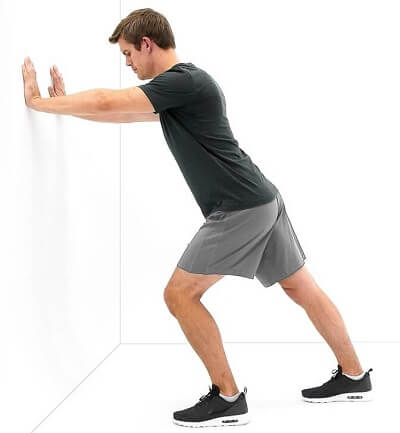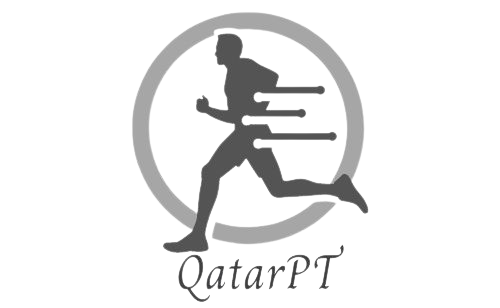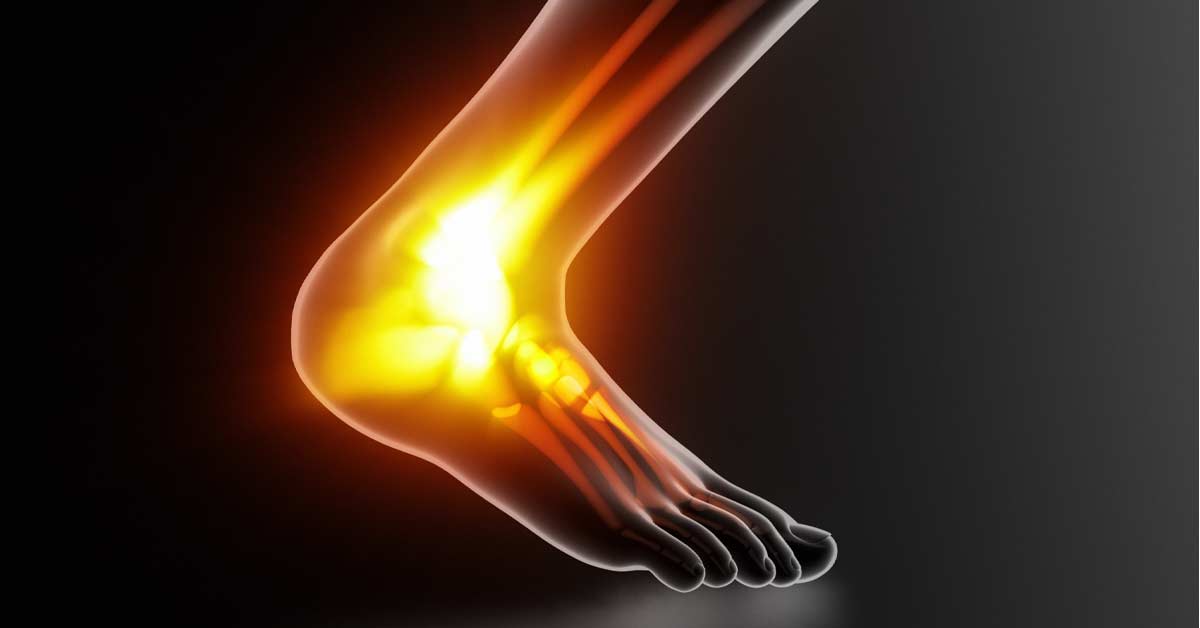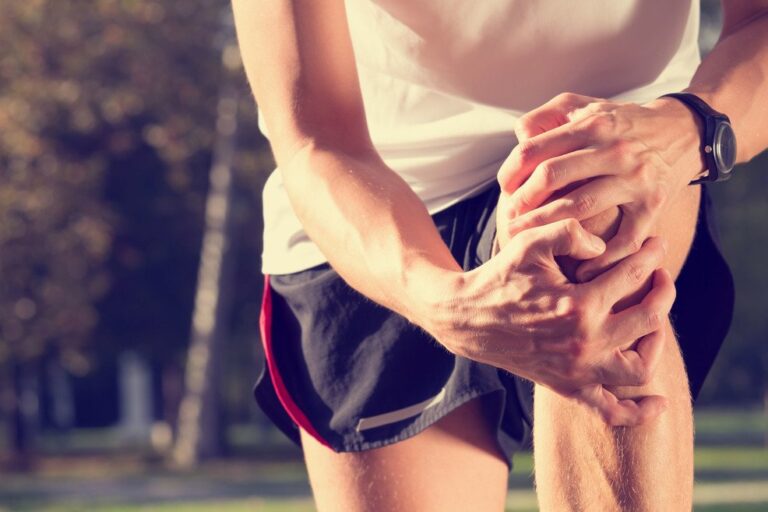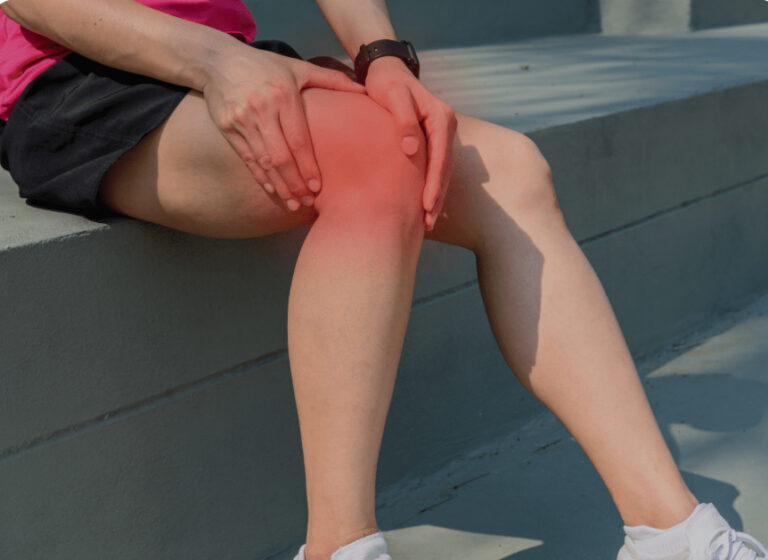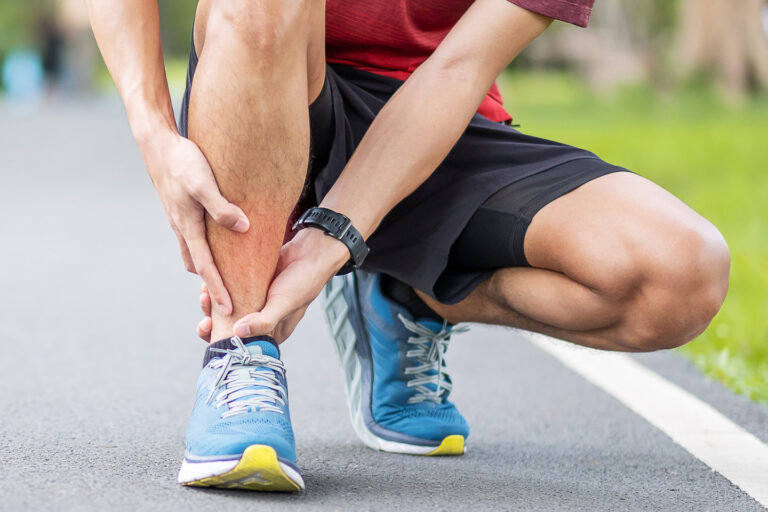Achilles Tendinopathy
What is an Achilles Tendon?
The Achilles tendon is the biggest and strongest tendon in your body. A tendon attaches mucles to bone and the Achilles tendon sits just above the heel bone. It attaches your two calf muscles (gastrocnemius and soleus) to the heel bone (calcaneus). The Achilles tendon helps you get onto your tiptoes, important movement for walking, running and jumping.
So what is Achilles Tendinopathy?
A tendinopathy is when the tendon is unable to function properly which results in repetitive small damages within the tendon, making it weaker and painful. Walking, running and any movement involving getting onto your tiptoes can be painful. Sometimes people with call this same condition Achilles tendinitis or tendinosis but it is the same thing.
Sports that often can cause Achilles Tendinopathy:
- Running
- Football
- Tennis,
- Volleyball
- Badminton.
What causes Achilles Tendinopathy?
Anything that can increase the load or stress on the tendon.
General risk factors:
- Age: more common in over 30yr olds
- Gender: more common in men
- Weight: high weight increases the risk
- Diabetes
- Tight/Weak calf muscles
- Poor endurance in calf muscle
- Poor core stability
- Stiff foot joints
Common Training Mistakes
- Increasing running distance or volume too quickly
- Running at high intensity with inadequate recovery
- Limited variation in training, e.g always running on same surface
- Running with old trainers
- Excessive hill training/track training
The common symptoms you may experience
- Morning stiffness: pain and stiffness over the tendon is often worse in the morning. This tends to ease off after walking for a few minutes but can take longer.
- Tenderness: over the tendon when touching or squeezing it. Sometimes you may feel a lump and/or hear clicking noise from the tendon when moving the ankle.
- Pain on training: this varies from person to person. Some people feel that the pain settles a bit during exercise whilst others have to stop their session due to pain.
How do we Treat Achilles Tendinopathy
- Do we need Investigations?
- Not usually, Xrays will not give us any useful information about your tendon. Sometimes an Ultrasound is used to look at the tendon to confirm diagnosis but most of the time we can diagnose this by examination and presentation of symptoms alone.
- Treatment Options
- ICE: put some ice (wrapped in a towel) over the painful area of the tendon. This can help to reduce the inflammation and the pain. Apply the ice for maximum 20min and repeat this 3-4 times per day if possible. Especially after training.
-
- Painkillers: simple paracetamol and Ibuprofen or Diclofenac can help in managing the pain. Ibuprofen or diclofenac gel can be useful to apply over the tendon up to 3 times a day. But if you use the gel then do not also take an ibuprofen or diclofenac tablet.
-
- Stretching: specific stretching exercises (see below)
-
- Eccentric Exercises: this is the most important part of your rehabilitation program. It will help the injured tendon to recover quicker. See examples below.
-
- Physiotherapy: will focus on these specific eccentric exercises but also stretches and massages.
-
- Active Recovery: most athletes would like to maintain fitness as much as possible whilst treating an injury. If you are unable to do your sports due to the pain then other forms of exercises can be done, such as Aqua-jogging (running in water/intervals using a belt), Swimming, Cycling and strength work in the gym.
-
- Other Treatments
- High volume injection: saline and anaesthetics injected into the area
- Autologous Blood: injection using your own blood into the injured area to encourage healing.
- Dry needling: similar technique to acupuncture. This will stimulate blood supply and healing.
- Podiatry assessment: for shoe inserts
- Surgery: in very specific cases
- Steroid injection: recent evidence is no longer supporting this as a good treatment option.
- Other Treatments
ECCENTRIC Exercises
The aim here is to gradually make your tendon stronger but building up the stress going through the tendon. The swelling and pain will then slowly improve. It varies how quickly these exercises work. For some people do they a very fast response whilst it can take 3-6months for others. About 70% of people can return to full activity within 3 months.
Pain during the Eccentric Exercises
- You may notice some increase in pain when you first start doing these eccentric exercises but it should reduce as you carry on with the programme.
- Use a pain scale: 0 being no pain and 10 being the worse pain you can image.
- The pain whilst doing the Eccentric Exercises should not be above 4 out of 10.
- If pain is LESS than 3-4 out of 10 -> then you can safely continue to the next stage of the programme.
- If pain is MORE than 4 out of 10 -> then you need to reduce the repetitions and use pain killers. If reducing the exercises is not working then rest for 2-5 days. Once pain is less than 4 out of 10 you can restart the eccentric exercises.
ECCENTRIC Exercise Programme
Phase 1
1.Tip-toe on both legs with legs straight
- Stand on both feet with legs straight.
- Use your GOOD leg to rise up onto your tip-toes
- Transfer your weight to your BAD leg and lower yourself down slowly.
- Repeat: 3 sets with 15 repetitions
- Do this Twice a day
2.Tip-toe on both legs with knees bent
- Stand on both feet with slightly bent knees
- Use your GOOD leg to rise up to tip-toes
- Transfer your weight to your BAD leg and lower yourself down slowly.
- Repeat: 3 sets of 15 repetitions
-
- Twice a day
Phase 2
1. Tip-toes on one leg wit leg straight
- Stand on both feet with your legs straight
- Use your GOOD leg to raise up onto your tip-toes
- Transfer your weight over to your BAD leg
- Lift your GOOD leg
- Lower yourself down slowly
- Repeat 3 sets of 15 repetitions
- Twice a day
2.Tip-toes on one leg with bent knees
- Stand on both your feet with knees slightly bent
- Use your GOOD leg to rise up onto tip-toes
- Transfer weight over to your BAD leg
- Lift your good leg
- Lower yourself down slowly
- Repeat 3 sets of 15 repetitions
- Twice a day
Phase 3
1.Heel drops over the edge of a step with legs straight
- Stand on both feet with your heels over the edge of a step with legs straight
- Use your GOOD leg to rise up onto tip-toes
- Transfer your weight across to your BAD leg
- Lower yourself down slowly
- Repeat 3 sets of 15 repetitions
- Twice a day
2.Heel drops over the edge of a step with knees bent
- Stand on both feet with your heels over the edge of a step with knees slightly bent
- Use your GOOD leg to rise up onto tip-toe
- Transfer your weight across to your BAD leg
- Lower yourself down slowly
- Repeat 3 sets of 15 repetitions
- Twice a day
- Up with straight legs
- Down with straight leg
- Down with bent leg
Calf Stretching Exercises
Soleus Muscle
- Use a wall for support
- Plant your foot flat on the floor behind you
- Lean forwards with your knee BENT until you feel a stretch in the back of your calf
- Hold stretch for 30sec-1min
- Don’t let your heel come off the ground
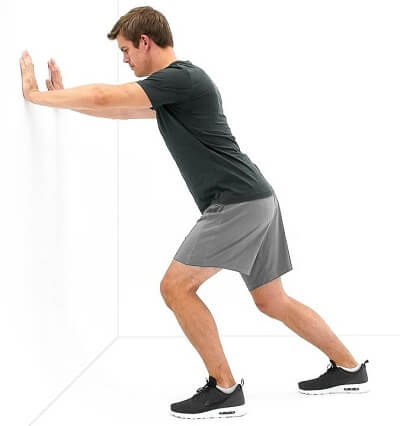
Gastrocnemius muscle
- Use a wall for support
- Plant your foot flat on the floor behind you
- Lean forward with your leg STRAIGHT until you feel a stretch in the back of your calf muscle
- Hold stretch for 30sec-1min
- Don’t let your heel come off the ground
